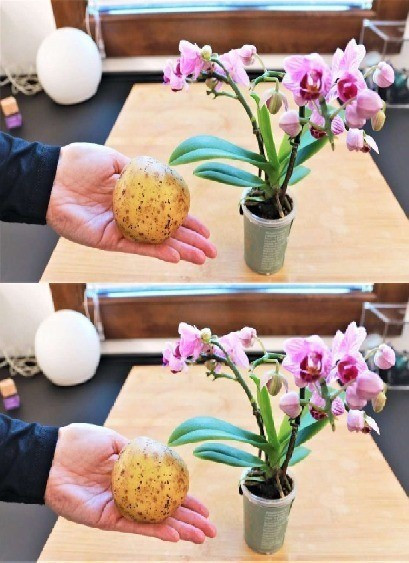ADVERTISEMENT
Introduction:
Orchids have long been celebrated for their stunning beauty and exotic charm. Yet, many find them intimidating, believing they require expert care or delicate handling. The truth is, with the right approach, orchids can flourish and bloom season after season, adding a luxurious touch to any space. This guide reveals the secrets to keeping your orchids strong, vibrant, and blooming indefinitely.
Ingredients (What You’ll Need for Orchid Care):
Healthy orchid plant (Phalaenopsis, Cattleya, or your preferred variety)
Orchid-specific potting mix (bark, sphagnum moss, or coconut husk)
Clear or breathable orchid pot
Distilled or rainwater (avoid tap water with chemicals)
Balanced orchid fertilizer (20-20-20 or similar)
Spray bottle for humidity
Well-lit but indirect sunlight spot
Thermometer (optional, for temperature monitoring)
Instructions:
Potting Your Orchid Properly
Use a pot with good drainage and fill it with an orchid mix that allows airflow to the roots. Repot your orchid every 1-2 years to refresh the medium and inspect root health.
Watering Right
Water your orchid once a week in most cases, allowing the potting medium to dry out slightly between waterings. Use distilled or rainwater to prevent mineral buildup. Avoid waterlogging the roots.
Optimal Light Conditions
Place your orchid in a spot that receives bright, indirect light. East or west-facing windows are ideal. Too much direct sunlight can scorch leaves, while too little light hinders blooming.
Temperature and Humidity
Orchids thrive in temperatures between 65-80°F (18-27°C) during the day and slightly cooler at night. Maintain humidity levels around 50-70%, using a spray bottle or humidity tray if necessary.
Fertilizing for Strength and Bloom
Feed your orchid every two weeks during the growing season with a balanced orchid fertilizer diluted to half strength. Cut back during dormancy in winter.
Encouraging Blooming
After flowering, trim spent flower spikes to encourage new growth. Some species bloom better with a slight drop in nighttime temperature.
Serving and Storage Tips:
Displaying Your Orchid: Show off your orchid in a stylish, well-ventilated spot with indirect sunlight. Avoid placing near drafts or heating vents.
Long-term Care: Regularly inspect roots for rot or pests. Keep leaves clean by gently wiping with a damp cloth.
Storage: Orchids do not need to be ‘stored’ but if you must move them indoors during cold seasons, acclimate slowly to prevent shock.
Variations:
Orchid Types: Experiment with different species like Dendrobium, Oncidium, or Paphiopedilum, each with unique care needs and blooming habits.
Creative Pots: Use transparent pots to monitor root health or decorative ceramic pots with orchid-friendly drainage.
Humidity Techniques: Try placing orchids on pebble trays with water or grouping plants together to increase ambient humidity naturally.
FAQ:
ADVERTISEMENT
